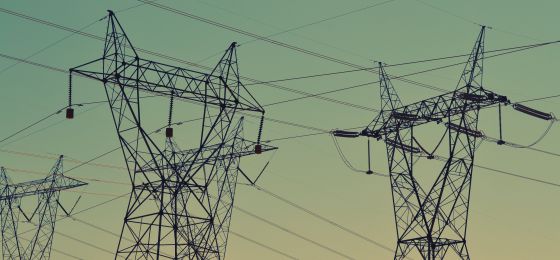As winter sets in our power bills rise to combat the cold. But, with some clever planning, it doesn’t have to rise too much. So how can you keep your winter power bills from causing a pinch on your pocket?
From ensuring you’re getting the best deal, to some smart power-saving tips, Canstar guides you through how to get the best deal, and save on your winter power bills.

Get cheaper power
One of the best ways to bring down your power bill is to pay less for your power itself. By comparing power providers with your current provider (and your current rates) you could find a better deal elsewhere. That could be in the form of better rates, or better benefits such as prompt payment discounts, signing on credit, free power hours and more.
Compare rates
Grab your latest bill. There are only two main charges you need to concentrate on:
- Fixed charges – these are displayed as cents or dollars per day. You are charged this fixed-rate each day, regardless of how much power you use
- Variable charges – the cost of the power you’ve used, based on consumption in kilowatts per hour (kWh)
Your bill should also include a charge for the Electricity Authority levy. This charge funds the government agency’s work to regulate the electricity industry, and is usually based on how much power you use. But don’t include it in your calculations, as it’s not relevant to an individual electricity provider’s power deals.
Then simply jump online and start comparing the rates offered by other providers.
Other benefits and signing on bonuses
Great rates are… well… great. But they’re not all to consider. For example, if your current plan offers a great prompt payment discount, it might work out cheaper than another plan with better rates (as was the case with a Canstar employee, who recently compared their own power bill.)
Likewise, some providers may offer signing on credit that can cover a month or two of your power use, bringing down the overall costs over the lifespan of your power plan.
Off-peak power
Some power plans come with two different variable rates, one for peak power and one for off-peak power. Off peak power rates offer cheaper power during off-peak hours (hours with less electricity demand). These are typically in the early hours of the morning, the middle of the day, and late at night.
If you can get a plan that offers off-peak power, and shift most of your usage to these off-peak hours (household chores, showers, charging an EV etc.) you could see big savings.
If you do choose an off-peak power plan, be sure to weigh up factors like:
- In exchange for the cheaper off-peak tariffs, are you being charged a higher peak power rate?
- What are the off-peak hours? While there are several off-peak hours a day (early mornings, late nights, etc) some power providers may only offer cheap power during some of these times, eg a few hours late at night.
- How much of your usage can be moved off-peak? If you still use plenty of power during peak times, the savings may be minimal, or, it could even end up costing you more.
Free power hours
Another option could be to take it a step further and make the most of free power hours. These plans offer free off-peak power, making the above strategy even cheaper to implement. In addition to the above factors, you should also consider:
- How many free hours are you getting?
- Are the hours customisable? Some providers give a fixed time window, while others let you choose your free hour(s)
Two great power plans offering free power hours are Contact’s Good Nights plan and Electric Kiwi’s MoveMaster plan.
Bundle your utilities
An electricity bundle is when a single company offers a deal to supply your power and one or more other utilities. For example, having one supplier for power, gas, and broadband. It’s typical for bundled utilities providers to offer discounts and savings if you sign up for multiple services.
Of course, it’s not always straightforward. You need to ensure that the final cost is good value. If saving on electricity comes at the cost of overpaying on broadband, then will it still work out cheaper overall? That’s not to say every utility has to be the cheapest on the market. Your phone plan might be a few dollars more than a competitor, but it might come with a bundled discount that significantly reduces broadband costs, outweighing the added expense.
→Related article: Electricity Bundles: Why Combine Your Power and Utilities?
Low user tariff
As the name suggests, a low user is someone who doesn’t use a lot of power. By law, all electricity providers must provide a low user tariff option, and if you fall into this category, you can save money on power by getting special low-user rates. However, what a lot of people don’t realise, is that the ‘low user’ figures were set years ago (and haven’t been updated since), back when our homes were guzzling a lot more energy. As a result, the majority of Kiwis are classed as low users!
It’s important to note that the low-user tariff is being phased out over the next five years. But that doesn’t mean you can’t make the most of it until then. You can learn more about the phasing out of the low user tariff here.
Fixed contracts
When signing up for power (or broadband or phone plans) you commonly have the choice to sign up for a plan on a:
- Fixed-term contract – commonly for 12 or 24 months. You agree to stay on the plan for a fixed period of time, but have to pay a break fee if you choose to end the agreement early
- Open-term contract – or a no-contract plan. This type of plan allows you to leave or change plans at any time without cost
By signing up to 12- or 24-month contracts you can usually secure a cheaper price. Although be aware that break fees will apply if you need to end your power contract early. An open term contract may not offer the same benefits but gives you the freedom to cancel and change providers easily.
→Related article: No-Contract Power Plans: What’s Available?
Compare power providers
A great way to start finding the best power provider is by checking out Canstar’s latest Star Ratings awards, which rate NZ power companies for customer satisfaction and value for money. See the table below for some of the results, or click on the button below for the full results of our survey.
Canstar Blue’s latest review of NZ power companies compares them on customer satisfaction. The table below is an abridged version of our full results, available here.
^ By clicking on a brand or 'details' button, you will leave Canstar Blue and be taken to either a product provider website or a Canstar Blue NZ brand page. You agree that Canstar Blue NZ’s terms and conditions apply (without limitation) to your use of this service,to any referral to a product provider from our website, and any transaction that follows. Canstar Blue may earn a fee for referrals from its website tables, and from sponsorship (advertising) of certain products. Payment of sponsorship fees does not influence the star rating that Canstar Blue awards to a sponsored product. Fees payable by product providers for referrals and sponsorship may vary between providers, website position, and revenue model. Sponsorship fees may be higher than referral fees. Sponsored products are clearly disclosed as such on website pages. They may appear in a number of areas of the website such as in comparison tables, on hub pages and in articles. Sponsored products may be displayed in a fixed position in a table, regardless of the product’s rating, price or other attributes. The table position of a sponsored product does not indicate any ranking, rating or endorsement by Canstar Blue. See How we are funded for further details.
Canstar Blue NZ Research finalised in April 2023, published in June 2023.
See Our Ratings Methodology

Better manage your usage
Once you have the best rates you can get, begin addressing your power usage. There are a number of steps you can take to do this:
Turn things off!
Start simple, and manage your power usage by turning things off when not in use. All the age old tricks such as flicking things off at the wall, or turning off lights when you’re not in the room apply, and they can all make a difference on your power bill.
Energy-efficient appliances
Simple steps like swapping out your light bulbs for LED bulbs, or replacing your whiteware with energy-efficient models can save a lot in the long run. Of course, whiteware isn’t cheap, so it’s probably not wise to replace perfectly good appliances for a more efficient one. But come time to upgrade, the energy efficiency of the appliances should be a key factor in any decision.
Furthermore, smart appliances can help you manage your usage through timers and remote control straight from your phone. And if you don’t have a smart appliance, you can always use smart plugs as a cheaper way to help manage them.
Limit your use
Cutting back where possible can make a big dent in your power bill. Running loads of washing or dishes every day can add up. Try cutting down and doing fewer loads, and air drying clothes where possible. Other ways you can limit your power usage include taking quicker showers and avoiding the overuse of heaters and electric blankets. For example, don’t run heaters in rooms you’re not using, and turn off electric blankets once you’re in bed.
Be smarter with your usage
You can’t cut back on all your power usage. After all, your fridge has to be on at all times. So where possible, maximise the efficiency of your usage. Below are some great tips on how to improve the efficiency of your refrigerator, washing machine and dryer.
Refrigerator
- Keep it (almost) full. A full fridge runs more efficiently, but ventilation is crucial as well. Fridges can be fickle to say the least. Try keep them around two-thirds full, this will keep it running efficiently while leaving enough space for proper ventilation
- Keep it closed. If you’re just grabbing the milk to add a drop in your tea, before putting it back, it’s easier to leave the fridge open. But doing so lets a lot of cool air escape, forcing your fridge into overdrive as it cools back down. No matter how quick you are with your milk, close the fridge door
- Check the seals. If these have worn, or aren’t fitted tightly, cold air can escape. Meaning your fridge has to keep on cooling
- Defrost. Ice build-up can impact the efficiency of your freezer. If ice around the inside is more than 1cm thick, scrape it away
Washing machine
- Avoid having it on standby, turn it off at the wall
- Avoid doing small loads of laundry
- Adjust water levels to not use more than needed
- Use predominantly cold water for your washes
Dryer
- Avoid having it on standby, turn it off at the wall
- Avoid drying loads of laundry that are too small or too large. Too small and it’s wasteful, too large and clothes won’t ventilate and dry efficiently. The warm air needs to move through the clothes
- Use dryer balls to speed up dry time. Dryer balls absorb moisture while also tumbling through the dryer, separating clothes and improving ventilation through the washing
- Switch loads while the dryer is still warm, utilising the already warm air to speed up drying.
- Dry heavyweight items separately. The dryer will continue to run until the heaviest items are dry, meaning any small items included will dry longer than necessary
- Use features, such as a cool-down cycle, which finishes drying with the remaining heated air left in the dryer

Insulation and heating
The right type of heating, used in the right way, can keep you cosy without causing your power bill to go through the roof. Maintaining a temperature between 18-21°C is plenty for most people, and won’t eat up too much power. The best way to manage this is by using heating options where you can accurately control the temperature.
Which type of heating is best?
Heat pumps are a great heating choice, and about as cheap as you can get. They offer plenty of control over your heating, and cost very little to run. They can also be used to cool in the warmer months, or even help dry laundry. Though if you don’t currently have one installed, there are significant installation costs. Although this can be mitigated through some heating and insulation loans and grants that are available.
Cheaper and more basic electric heaters may be appropriate in some scenarios. These heaters cost more to run, but are portable and practical and can help particularly in small rooms that aren’t used as frequently. These could be used for a short amount of time to get the room up to the desired temperature before being turned off.
Do keep in mind that if you attempt to use these in large spaces, or run them often, not only will the heating effects be ineffective, but expensive.
→Related article: How to Choose the Right Heat Pump and Save Money
Insulation
The loans and grants that can assist in your heating costs can also be used to install insulation in your home. Proper insulation can help keep in warm air, while keeping cold air out. Not only will you feel warmer, but it’ll make your heating more effective. Aside from installing insulation, there are plenty of other ways to better insulate your home and reduce draughts:
- Checking hinges and catches or latches, tightening up any that are loose
- Adding weather stripping, sealing gaps around most doors or windows
- Sealing door or window trims using clear or paintable sealant
- Fitting draught excluders for gaps under internal and external doors
- Replacing damaged rubber seals around aluminium joinery
- Blocking chimneys of unused fireplaces
- Sealing gaps around extractor fans and range hoods, plumbing passages etc
Regulate natural heat
Another great way to keep in warm air is to regulate natural heat. Barriers such as curtains, blinds, awnings and plants can be used to regulate sunlight, variously blocking or allowing sunlight in, depending on the time of year. Furthermore, by closing blinds before the sun sets, you can help trap in the warm heat of the day.

About the author of this page
This report was written by Canstar Content Producer, Andrew Broadley. Andrew is an experienced writer with a wide range of industry experience. Starting out, he cut his teeth working as a writer for print and online magazines, and he has worked in both journalism and editorial roles. His content has covered lifestyle and culture, marketing and, more recently, finance for Canstar.
Enjoy reading this article?
You can like us on Facebook and get social, or sign up to receive more news like this straight to your inbox.
By subscribing you agree to the Canstar Privacy Policy


Share this article